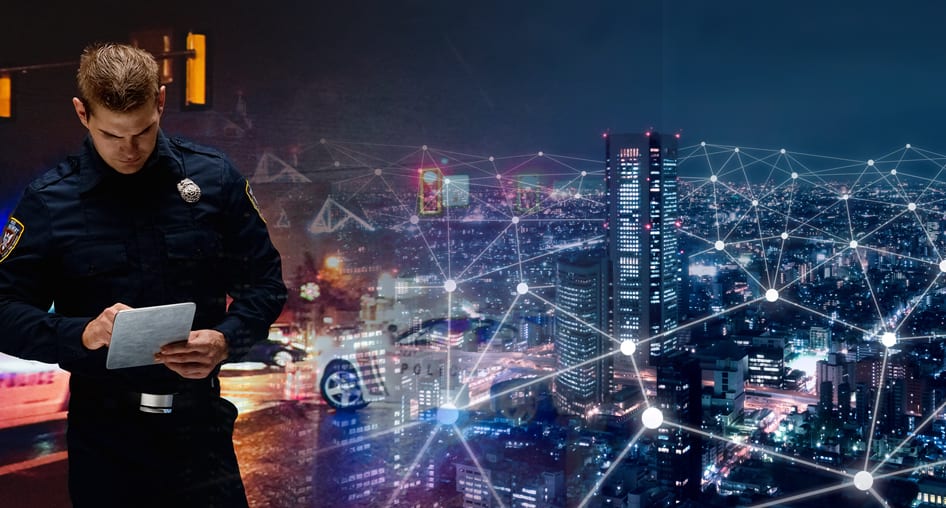Use Cases of Smart Utility Applications for First Responders
By Ken Bednasz
May 1, 2020

When disaster strikes, a direct line of communication between first responders is crucial for saving lives, assessing damage and providing routes for safe travel during evacuations and post-crisis returns. Cellular broadband innovations across the First Responder Network have made it possible to broadcast emergency alerts (e.g., tornado and flash flood) directly to mobile users in recent disaster areas, such as those hard hit with COVID-19 infection escalations. Faster broadband signals and smarter technology have also given rise to device location improvements, such as visual data transmission through cameras and location tracking for vehicles and emergency personnel.

In the past, reliance on analog systems and overwhelming incompatibility with over 10,000 separate radio networks slowed down communication efforts for police, firefighters, medical response teams and hazardous waste management officials. During an emergency, first responders need to be able to clear roads, turn off downed powerlines and stop the flow of excess water.
The Internet of Things (IoT) enables new possibilities in smart utilities — wireless management of power grids, emergency power shut off and restoration, detecting broken water lines and blocked pipes, and much more. Smart utilities make life simpler and safer for city management, home consumers and first responders.
During natural disasters such as hurricanes, damage and loss of life can be attributed to inadequate transmission lines, weak power grid infrastructure and electrical systems that are not weather resistant. Upgrades to existing utility structures with smart grid sensors and control technologies can hasten post-disaster relief and restoration efforts.
Like the vast network of weather balloons and disposable sensors that collect critical hurricane data and make instant recommendations, IoT initiatives are paving the way for more robust pre-response measures and recovery efforts. These applications operate through public safety broadband networks and smart grid connectivity .

Imagine an automated stream of real-time, human-readable data for everything from water flow to traffic jams and rises in wind speed that could directly affect first responders. All this information is available on a network that won’t drop the signal when it is needed most. FirstNet, the nationwide public safety network dedicated to first responders in the U.S., was developed by the First Responder Network Authority in 2017 to improve first responder communications. Licensed to Band 14, this network ensures communications for first responders are always given priority, without disruption from public networks. Gone are the days of clogged radio frequencies, faulty two-way communications and lack of access to options for shutting power on and off for critical operations.
Gigabit LTE and 5G-compatible technologies bring reliability, global economy of scale and speed unmatched by private radio systems. Chipsets and data cards have been developed for exclusive use on Band 14. Through real-time data collection, IoT solutions are helping first responders work through an emergency efficiently and help in emergency preparation and prevention measures going forward.
Telit was the first to introduce a full line of embedded LTE modules and data cards for first responder applications. Telit’s LM960 mPCIe was the first Gigabit LTE Cat 18 module to undergo First Responder Network review and supports gateways and appliances inside emergency vehicles. Telit’s LE910C1-NF and LE910C4-NF provide manufacturers and system integrators with cost-effective ways to deliver advanced first responder IoT applications with a reduced time to market. “FirstNet devices and modules go through extensive review,” said Bob Sloan, AT&T’s Chief Operating Officer, FirstNet. “First responders can be confident that they meet our highest standards for reliability, security and performance.”
These modules and data cards handle first responder use cases such as ruggedized laptops, handhelds, video surveillance, dash and body cameras, telematics, passenger information systems, asset tracking and emergency monitoring and detection. Through real-time data collection, IoT solutions are helping first responders work through an emergency efficiently and help in emergency preparation and prevention measures going forward.
With the power of IoT, more life-saving applications, such as emergency power shut off and restoration, will save cities millions and bolster quick response and recovery efforts before and after disaster strikes. Telit brings those ideas to life with their IoT-enabled chipsets and modules that can be incorporated into wearable health monitors, automated transportation devices and smart grids that control city traffic lights, water mains and emergency power controls. Contact us today to request an evaluation kit for your first responder application.